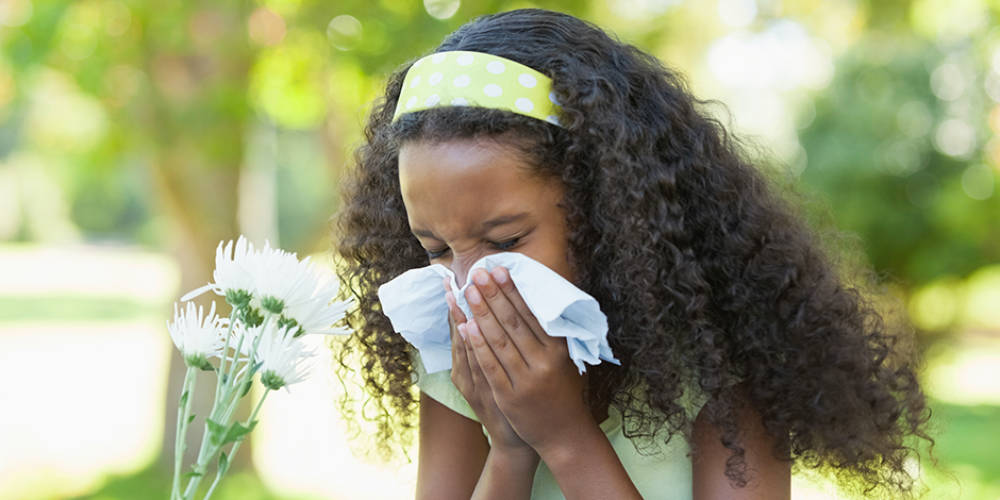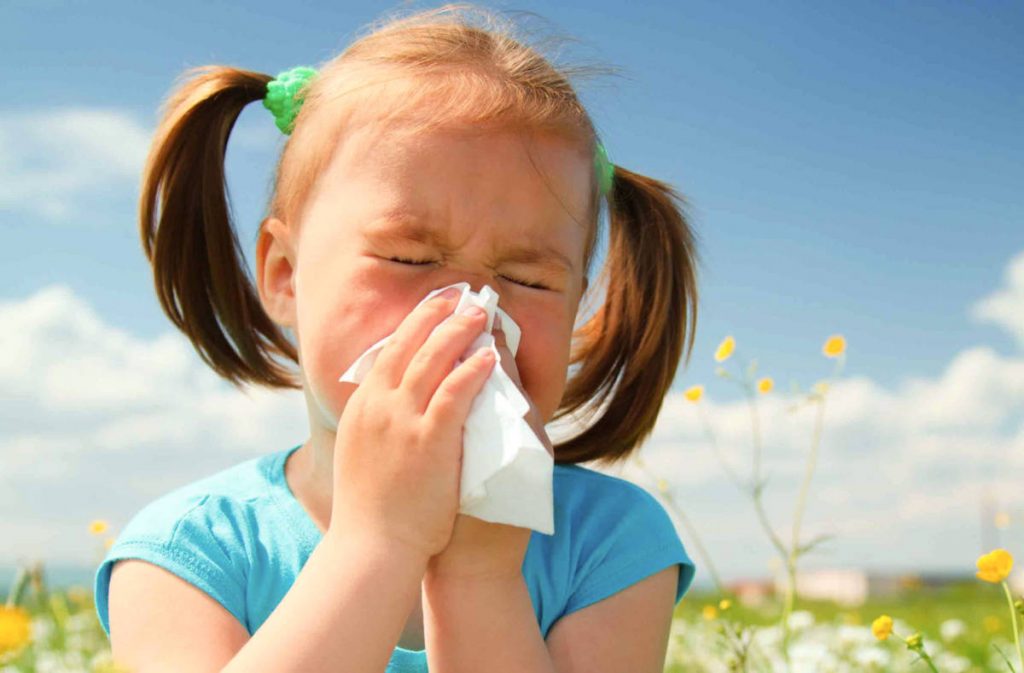Managing Allergies in Children! Battling allergies is no small feat for kids and their families. Although it can seem daunting, up to 40% of children struggle with allergic reactions in some form or another – so you’re not alone! Welcome to our blog on Managing Allergies in Children; your go-to resource guide that will help equip parents and caregivers with the tools they need to identify allergens, implement preventative measures, plus a range of treatment options tailored just for kiddos who experience allergy symptoms like itching, sneezing…the list goes on!

Let’s arm ourselves together against irritating invaders – here we’ll be exploring ways both big and small that make a difference in managing childhood allergies.
Managing Allergies in Children a How To!
Allergies can be a real pain for parents and kids alike. But with the right tips and tricks, you can help your kiddo avoid those pesky problems without sacrificing their joy! Join us as we dive into our comprehensive guide on allergy management – because happy children make healthy families!
My child has allergies
Allergies in children can be quite the hassle to manage – but don’t worry, there are a few steps you can take! Depending on your child’s individual needs and allergies’ severity, avoiding trigger foods or using antihistamines may help. In more severe cases shots could even become necessary; so it is important to consult an allergist for tailored advice. Though managing allergies isn’t easy going, taking these measures will keep our little ones safe and healthy – because that matters most of all!
The Different Types of Allergies in Children
Is it raining and your child’s allergies are making her sneeze nonstop? Or maybe eczema on their skin is playing up again. No matter what, you may think that one type of allergy fits all but surprise! We have a secret to share – there are actually four different types of allergies out there. Now guaranteed, no more guessing games when trying to treat seasonal symptoms this year!
The Four Types of Allergies
Feel like you’re living in a minefield of potential allergies? You may be right – there are four kinds, each causing irritating reactions when they come into contact with your body. Contact allergies are caused by something hitting the skin; inhaled ones happen after breathing them in; ingested ones develop through eating an allergen and injected versions can range from bee stings to vaccines. Keep vigilant out there!
Contact Allergies
Got your eyes peeled for skin rashes? Your child could be having an allergic reaction to dreaded contact allergens like poison ivy, nickel, or latex. Itching, redness, swelling, and blistering are common signs of a possible allergy – so if you want the best treatment plan make sure you book an appointment with the doctor!
Inhaled Allergies
Is your child constantly sneezing, with a runny nose and watery eyes? If so, they may be suffering from inhaled allergies. Common culprits are pollen, dust mites, or mold spores – all of which can trigger asthma too! Don’t let these pesky allergens ruin the fun: have your little one visit their doctor for a diagnosis and advice on staying away from bothersome triggers.
Ingested Allergies
Allergies can sneak up on us when we least expect them. Do ingested allergies occur when something is eaten that the body perceives as a threat, such as peanuts, eggs, milk, and shellfish – sound familiar? If your little one has ingested an allergen they may experience some uncomfortable symptoms like hives or swelling of the throat which could lead to difficulty breathing – so keep an eye out! Those with severe reactions require medical help right away in case they are going into full-blown Anaphylaxis. Stay alert and knowledgeable about allergic ingredients but remember: even if you’re caught off guard by food-related woes there is always someone who knows how best to treat them!
Injected Allergies
Not all allergies come from eating the wrong food – some are injected directly into your body! Common injected allergens, like bee venom or penicillin found in a vaccine can cause anaphylaxis if you don’t get medical attention right away. Symptoms of this dangerous reaction include hives, itching and swelling as well as difficulty breathing and nausea – so it pays to be vigilant about potential sources of injection-based allergies!

How to Avoid Allergy Triggers:
Keeping your kids free from allergies can be a difficult task this spring, with pollen and other allergens in full force. But by avoiding triggers and keeping an eye out for signs of distress, you’ll soon have the whole family living comfortably all season long! Here’s how to make it happen.
Tip #1: Check the Pollen Count
With high pollen counts, it’s best to keep your little ones comfy and cozy indoors – or at least close the windows! For those who do suffer from seasonal allergies, running an air conditioner is a great way of filtering out unwanted allergens. Fortunately, most weather forecasts now include up-to-date information on the current pollen count along with what we can expect in the coming days.
Tip #2: Keep Them Clean
Help your kids beat allergens with a bedtime shower routine! By taking off their clothes and giving themselves (or letting mom and dad give them) a nice wash before dreams take over, children can keep the irritants of the day away.
Tip #3: Don’t forget the pets!
For children with pet allergies, it can be hard to find a panic-free play date. If your kiddo has been exhibiting signs of dander sensitivity, try setting them up for fun away from furry four-legged friends; think grandma’s house or the sleepover you always wanted as a kid! With no pets at grandma’s and less likely exposure in general settings (like school), symptoms should subside after just a few days – best of all without leaving home.
Managing Allergies with Medication:
Allergies can be a real pain, especially for kids. Thankfully there’s help available! The two most popular medications used to address uncomfortable reactions in children are antihistamines and decongestants. Antihistamines act like bodyguards by blocking histamine – the chemical responsible for much of your kiddo’s allergic unpleasantness; while decongestants shrink blood vessels reducing inflammation and congestion. No more sniffles or sneezes – time to get back outside (or anywhere else) with relief from allergy meds!

Tired of seeking the perfect medication for your child’s allergies? Don’t worry, you’re not alone. With so many brands and types out there to choose from, it can be a difficult feat without some expert advice! Consult with your kid’s doctor – they’ll know which antihistamines such as Claritin or Zyrtec work best; even decongestants like Sudafed and Afrin are available options too. Get ready to say goodbye to those pesky sniffles in no time!
Medication is an important part of keeping your child healthy, but it’s essential to administer the recommended dose and read up on any potential side effects. Antihistamines can make little ones drowsy while decongestants may lead to head pain, moodiness, or difficulty sleeping – so watch out!
Managing Allergies with Shots:
If allergies have been giving you trouble, it’s time to look into immunotherapy! This treatment involves getting allergy shots over a period of time that can actually help your body build resistance against potential allergens. So go ahead and bid farewell to those symptoms – relief may be closer than you think!
What is Immunotherapy?
Immunotherapy can be an incredibly helpful tool for folks with allergies, allowing them to build up resistance over time. If you’re looking for relief from pesky allergens, it could mean the difference between experiencing a world of sneezes and a life free from sniffles! Allergy shots or sublingual immunotherapy (SLIT) are both popular options that gently increase your body’s immunity by introducing small amounts of substance on repeat.
Why Try Immunotherapy?
Immunotherapy might seem like a daunting prospect for those with allergies, but it does offer the potential to help reduce reactions long-term. This treatment won’t be quick – in fact, usually, months or years are needed before results start showing – yet most people find that this journey is worth taking as they experience an undeniable improvement in their condition.
How Does Immunotherapy Work?
Could the key to overcoming pesky allergies be as simple as a few drops under your tongue? It just might! Allergy shots or SLIT (Sublingual Immunotherapy) provide an effective way for our bodies to create immunity against allergens. Through allergy shots, we’re exposed through gradual injections until our body is less reactive when faced with triggers. With SLIT, you can get similar results without needles – simply taking everyday oral doses of allergen-filled tablets and tinctures beneath your tongue!
Conclusion:
Keeping your children safe and healthy should be a priority. By taking the right steps to manage their allergies, you can ensure that they’ll stay free of dangerous reactions – so no matter what time of year it is, everyone in your family can continue feeling fine!
Have any personal tips to share?
Leave them in the comments below – we’d love to hear from you!
More reading suggestions:


